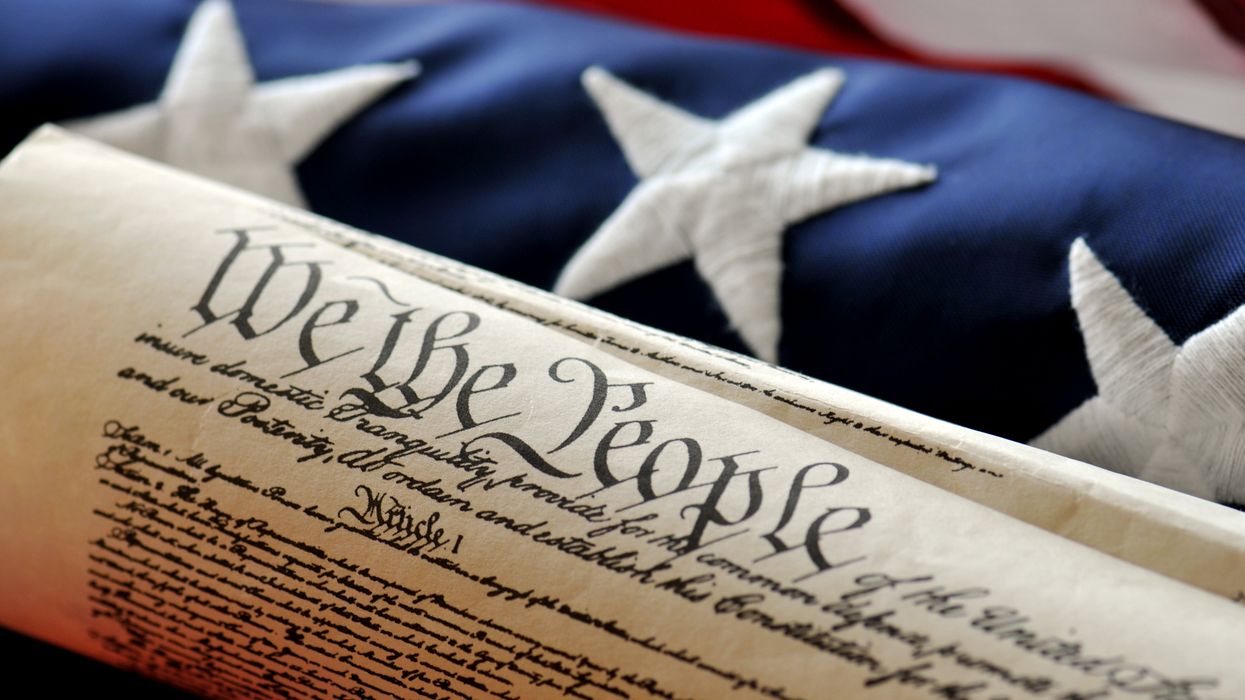Constitution Day is September 17. In his Constitution Day Conversation with Fulcrum Contributor Rick LaRue, leading constitutional scholar and advisor Richard Albert places the document in a refreshing as well as reflective light. He teaches at the University of Texas at Austin, is a prolific author, and actively serves the field’s participants around the world, from students to governments. The interview has been edited for length and clarity.
Rick LaRue: Before tackling some contemporary challenges, a background question: In the main, constitutions shape governance and protect rights. The U.S. Constitution originally focused on the former and has mostly advanced the latter through amendments. How does this compare internationally?
Richard Albert: The U.S. Constitution contains many fewer rights than constitutions around the world. Modern world constitutions generally also contain economic, social, and cultural rights—like the rights to housing, health care, education, and a clean environment—but the U.S. Constitution contains none. It is a stark contrast that has caused many to argue that the U.S. Constitution should be modernized to protect 21st-century rights in its text, rather than only in its interpretation. Even U.S. state constitutions protect more modern rights than the U.S. Constitution. That does not mean Americans have no rights under the Constitution, but they have to look elsewhere to find most of them, starting with judicial opinions and legislative enactments.
RL: There is a lot of noise as well as legitimate concern about the current administration's behavior constitutionally. Is there a "noisier" topic that you think doesn't deserve the attention?
RA: There is no credible evidence that President Donald Trump will seek a third term. Yet many in the media are sounding the alarm about that possibility. Perhaps less attention could be paid to that? But there is a legal pathway—without amending the Constitution—for President Trump to serve a third term: the Republican ticket prevails in 2028; the Republicans also take the House and elect President Trump as Speaker, a post anyone can hold; and then the elected president and VP resign, enabling the next-in-line Speaker to assume the office.
RL: Have we been experiencing a constitutional crisis already, or have we yet to reach that point?
RA: More than anything else, this is what I hear from my students: they are profoundly worried about the state of democracy. They wish there were something they could do. I advise them to consider getting involved in politics, at any level of government, whether national, state, or local. I tell them they have the power to build the society in which they wish to live. Because it is true: no one can deny that politics today are generating enormous pressures in law and society. But we are not in a constitutional crisis. The Constitution is resilient and adaptable, more so than any other constitution ever written. History has proven that the Constitution can endure virtually anything. The Electoral College deadlock in 1800, the Civil War, two world wars, court-packing threats, and so much more. Elsewhere in the world, similar episodes have led to new constitutions. But not here. The Constitution remains.
RL: Which leads to my next question about constitutional change. James Madison feared it while Thomas Jefferson wanted it to occur regularly, even once per generation. What should we take from this living disagreement?
RA: The great debate on the optimal frequency of constitutional change was very well captured in an exchange of letters between these two Founders. Jefferson argued that “no society can make a perpetual constitution.” He believed that every generation should write a new constitution, roughly every 20 years. Madison disagreed. He wanted the Constitution to endure as the centerpiece for a stable regime.
There is a middle ground between Jefferson and Madison. Fourteen state constitutions require voters to answer a simple ballot question every 10, 16, or 20 years: Do you want to hold a new constitutional convention? If the people vote “yes,” a new convention must be held. (Rhode Island was the last to do this, in 1986.) If the people vote “no,” that sends a strong, “re-ratifying” statement of approval for their state’s current constitution.
Imagine if this option were available for the U.S. Constitution. It would empower the people to seize the reins of their constitutional future, whether under the current Constitution or a new one altogether.
RL: What topic would you pick to benefit from formal constitutional change (amendment), if you had to choose just one?
RA: How about setting an age limit for the president and Congress? Overwhelming supermajorities of Democrats (76%) and Republicans (82%) support an upper age limit for all federal elected officials. A maximum age requirement would also bring symmetry to the Constitution, given that it contains minimum age requirements for these officials—the president (35), senators (30), and representatives (25).
RL: Which feature that was left out of the Constitution would you have advocated to be included had you been at the 1787 Convention?
RA: The Framers should have included a rule on how to “edit”—amend—the document. The choice to append amendments sequentially at the end of the original text was not made until the First Congress debated what to do with the Bill of Rights. Since then, all amendments have been detached from the founding text. This creates a clear demarcation between the Constitution and amendments to it. James Madison recommended merging new amendments directly into the text of the Constitution, blending new texts with the old. Had he won this battle, the Constitution would not be the same today. It would look different aesthetically. More importantly, it would have generated different applications and interpretations in law. Edward Hartnett wrote an excellent article on this underappreciated twist of history!
RL: If there is one area of misunderstanding about the Constitution that you wish could be cleared up, what would that be?
RA: The U.S. Supreme Court is powerful, but it does not have the last word on the meaning of the Constitution. Any ruling of the Court can be reversed by a constitutional amendment. This is not just a theory—it has happened several times in American history. Of course, it is difficult to amend the Constitution. But if the people and their elected representatives are sufficiently displeased, they can overrule the Court.
RL: What point would you make to clarify for citizens why the Constitution matters to their lives today?
RA: Akhil Amar is right: the U.S. Constitution is the hinge of human history. The world is different—not just different, but better—because of it. Democracy exists on a large scale because of the Constitution’s impact at home and its influence abroad. Popular sovereignty is now the central governing principle that sets the expectation for constitutional states around the world. And rights and freedoms abound because of the revolutionary example set by the United States. Of course, the country was mired in abhorrent contradictions at its founding. But changes in law and society have made amends, with more work still to do. The trendline of the history of the world points toward expanding rights, democratizing government, and deepening the rule of law—and it all began with the enactment of the U.S. Constitution.
RL: Thank you, Richard. Happy Constitution Day!
Read the complete conversation.
Rick LaRue writes about constitutional electoral structure and amendments at Structure Matters.



















